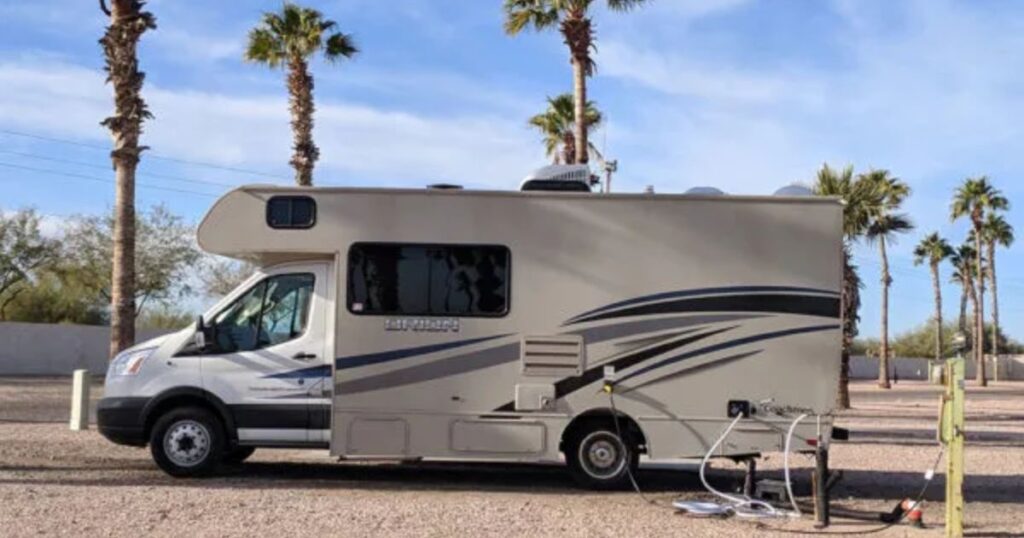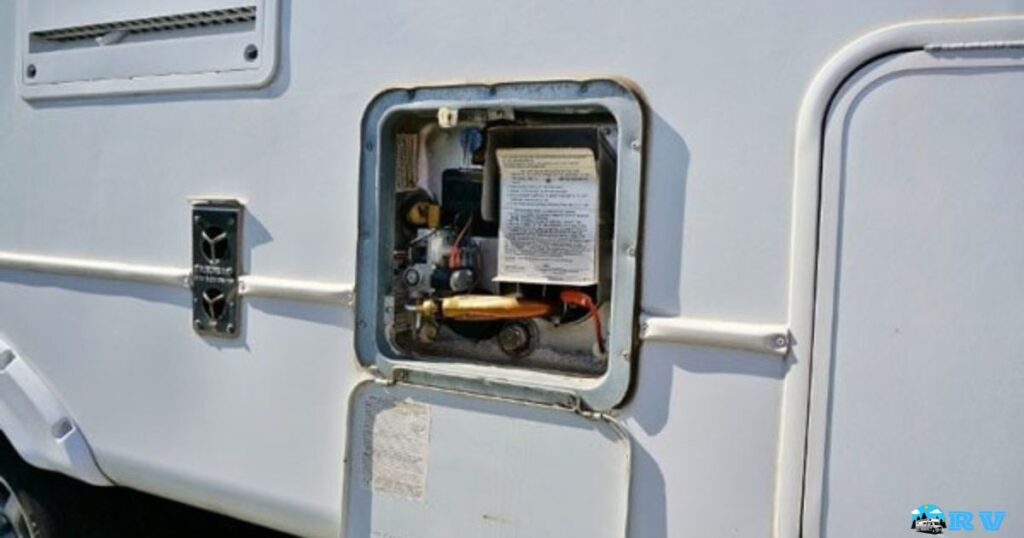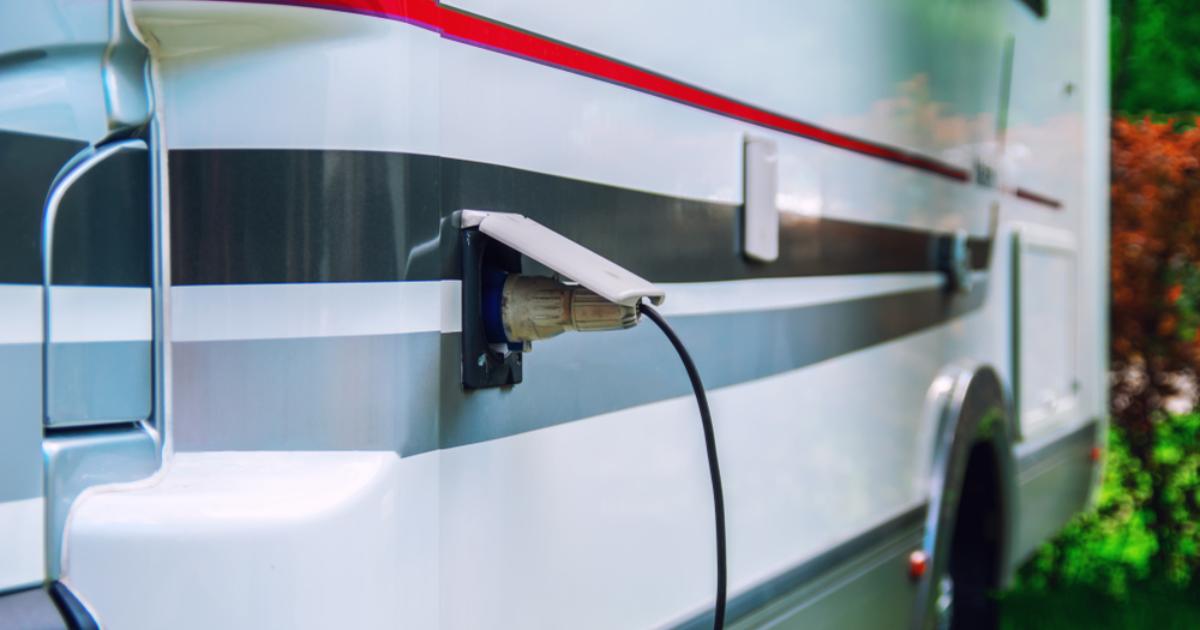Are you tired of feeling like the odd one out at your campsite, struggling to connect your 30 Amp RV to a generator? Well, fret no more! In this article, we will guide you through the art of plugging your RV into a generator with finesse and ease. From choosing the right generator to understanding the intricacies of RV electrical systems, we have got you covered. Get ready to join the tribe of successful RV enthusiasts and plug in with confidence!
Key Takeaways
- Choose a generator with a 120-volt output and a 30 Amp RV outlet
- Consider the power requirements and wattage of all appliances and devices in the RV
- Take into account the starting watts needed for common RV appliances
- Ensure proper hook-up and tight connections between the generator and RV to avoid power loss or hazards
Choosing the Right Generator
Selecting the appropriate generator is crucial when plugging a 30 Amp RV into a power source. To ensure a seamless experience, it is essential to consider the power requirements of the RV and match them with the capabilities of the generator. A 30 Amp RV typically requires a generator that can provide at least 3,600 watts of power. Additionally, the generator should have a 120-volt output and be equipped with a 30-amp RV outlet.
It is also important to determine the fuel type that best suits your needs, whether it be gasoline, propane, or diesel. By carefully selecting the right generator, you can ensure a reliable power source for your RV and have a stress-free adventure. Understanding RV electrical systems, including effective strategies like keeping my RV AC from freezing up, will further enhance your knowledge and enable you to make informed decisions when it comes to powering your RV.
Understanding RV Electrical Systems
To ensure a successful connection between a 30 Amp RV and a generator, it is vital to have a comprehensive understanding of RV electrical systems. Here are three key aspects to consider:
- Power Requirements: RVs typically operate on a 120-volt AC electrical system, requiring a 30 Amp power supply. This means that the generator must be capable of delivering a consistent 30 Amp output to meet the RV’s power demands.
- Circuit Breakers and Distribution Panels: RVs have circuit breakers and distribution panels that control the flow of electricity throughout the vehicle. Understanding how these components work and their location within the RV is crucial for troubleshooting and ensuring a safe electrical connection.
- Grounding and Wiring: Proper grounding and wiring are essential for the safe operation of an RV electrical system. It is important to familiarize yourself with the RV’s grounding system and ensure that the generator’s grounding is compatible with the RV’s electrical setup.
With a solid understanding of RV electrical systems, you can now move on to learning about the basics of 30 Amp RV service.
The Basics of 30 Amp RV Service

Now, moving onto the next subtopic, let’s explore the fundamental aspects of 30 Amp RV service. Understanding the basics of 30 Amp RV service is crucial for RV owners who want to ensure their electrical system functions properly. A 30 Amp RV service provides 120 volts of power and is the most common type of electrical system found in RVs.
It consists of a 30 Amp plug that connects to the RV’s electrical system and supplies power to various appliances and devices. It is important to note that a 30 Amp RV service has limitations in terms of the number and types of appliances that can be used simultaneously. Therefore, it is vital to manage power consumption carefully to avoid overloading the system and causing damage.
Determining the Generator Size for a 30 Amp RV
Understanding the power requirements of a 30 Amp RV service, it is essential to determine the appropriate generator size to ensure sufficient power supply for all appliances and devices. To help you in this process, here are three key factors to consider:
- Total Wattage: Calculate the total wattage of all the appliances and devices you plan to use simultaneously in your RV. This will give you an idea of the minimum wattage capacity your generator should have.
- Starting Power: Some appliances, such as air conditioners and refrigerators, require additional power when starting up. Make sure to factor in the starting power requirements when selecting a generator to avoid any issues.
- Generator Type: Different types of generators have different power capacities. Inverter generators are known for their quiet operation and stable power output, while conventional generators are typically more affordable but may produce more noise.
Considering Starting Watts for a Smooth Connection
When plugging a 30 Amp RV into a generator, it is important to take into account the starting watts required for a smooth connection. Starting watts refer to the initial surge of power needed to start appliances or equipment. This surge can be significantly higher than the running wattage.
Failing to consider starting watts can lead to overloading the generator and causing damage. To ensure a smooth connection, it is crucial to select a generator with enough starting watts to meet the demands of the RV appliances. The table below provides a general guide for estimating the starting watts required for common RV appliances:
| Appliance | Starting Watts |
|---|---|
| Air Conditioner | 2,800 – 3,500 |
| Microwave | 1,200 – 1,500 |
| Refrigerator | 1,200 – 2,000 |
| Water Heater | 1,500 – 2,500 |
| TV | 200 – 400 |
Popular Generators for 30 Amp RVs
One popular option for powering a 30 Amp RV is by using a generator designed specifically for this purpose. These generators are specially designed to provide the necessary power to run all the appliances and systems in an RV without overloading the circuit. Here are three popular generators for 30 Amp RVs:
- Honda EU3000iS: Known for its reliability and quiet operation, the Honda EU3000iS is a popular choice among RV owners. It provides a maximum output of 3000 watts, which is more than enough to power a 30 Amp RV.
- Champion 3400-Watt Dual Fuel RV Ready Portable Inverter Generator: This generator offers the flexibility of using either gasoline or propane as fuel. It features a 3400-watt maximum output and is designed to be RV-ready with a 30-amp RV outlet.
- Westinghouse iGen4500DF: With a maximum output of 4500 watts, this dual fuel generator can easily power a 30 Amp RV. It is fuel-efficient, quiet, and comes with an RV-ready 30 Amp outlet.
How to Hook Up a Generator to Your RV
To connect your RV to a generator, you will need the appropriate power cord and an understanding of the correct hookup procedure. When hooking up a generator to your RV, it is important to ensure a safe and reliable connection. The first step is to choose the right power cord that matches the amperage of your generator and RV. A 30 Amp RV requires a 30 Amp power cord.
Once you have the correct cord, locate the generator’s outlet and plug in one end of the cord securely. Then, find the RV’s power inlet and connect the other end of the cord. Make sure the connection is tight to avoid any power loss or potential hazards. Finally, start the generator and check if the RV is receiving power. Following these steps will allow you to safely hook up your generator to your RV and enjoy a comfortable camping experience.
Essential Tips for a Successful Connection
To ensure a successful connection between your 30 Amp RV and generator, it is crucial to follow these essential tips for a safe and reliable hookup:
- Check the compatibility: Before attempting to plug your RV into the generator, make sure that both the generator and RV are compatible in terms of voltage and amperage. The generator should have a 30 Amp outlet and be capable of delivering enough power to meet your RV’s needs.
- Use the right cords and adapters: It is important to use the appropriate cords and adapters to connect your RV to the generator. Ensure that the cords are rated for outdoor use and have the correct plug types to fit both the RV and the generator.
- Proper grounding: Grounding your generator is essential for safety. Make sure that the generator is properly grounded according to the manufacturer’s instructions. This will help prevent electrical shocks and protect your RV’s electrical system.
Plug RV Into House Power Safely

For a safe and reliable connection, it is important to plug your 30 Amp RV into house power using the proper equipment and following specific safety guidelines. To start, make sure you have a 30-amp RV plug adapter that matches the electrical outlet in your house. This will ensure a secure and compatible connection. Additionally, check the power supply in your house to ensure it can handle the electrical load of your RV. It is crucial to never overload the circuit, as this can pose a serious safety risk.
Before plugging in your RV, turn off all appliances and electrical equipment inside to prevent a power surge. Finally, use a high-quality surge protector to protect your RV’s electrical system from any potential power fluctuations. By following these safety measures, you can safely and efficiently plug your RV into house power. Now, let’s explore generator maintenance for RVs.
Exploring Generator Maintenance for RVs
Exploring the maintenance of generators for RVs involves regular inspection and servicing to ensure optimal performance and longevity. Proper maintenance is essential for the smooth functioning of the generator, especially during camping trips or when the RV is parked in remote locations. Here are three key maintenance tasks that RV owners should prioritize:
- Regular oil changes: Just like a car engine, the generator in an RV requires routine oil changes to keep the internal components lubricated and running smoothly. Check the manufacturer’s guidelines for the recommended oil change frequency and type of oil.
- Air filter cleaning/replacement: The air filter plays a crucial role in preventing dust, dirt, and debris from entering the generator system. Clean or replace the air filter periodically to ensure proper airflow and prevent damage to the engine.
- Fuel system maintenance: RV generators rely on a fuel system, which includes the fuel tank, lines, and filters. Regularly inspect and clean these components to avoid fuel contamination and ensure efficient fuel delivery to the generator.
Connecting With Fellow Travelers
Maintaining your RV generator properly is crucial, and connecting with fellow travelers can provide valuable insights and tips for enhancing your generator’s performance and troubleshooting any issues that may arise. When you connect with fellow travelers, you become part of a community that shares a common interest and passion for RVing. By engaging in conversations and participating in online forums or social media groups dedicated to RVing, you can tap into a wealth of knowledge and experience.
This sense of belonging allows you to exchange ideas, ask questions, and learn from others’ experiences. Whether you are a novice or an experienced RV owner, connecting with fellow travelers can offer you support, guidance, and a sense of camaraderie on your RV journey. So, don’t hesitate to reach out and connect with your fellow RV enthusiasts.
Frequently Asked Questions
Can I Plug My 30 Amp RV Into a Generator With a Higher Amp Rating?
It is possible to plug a 30 amp RV into a generator with a higher amp rating. However, it is important to ensure that the generator’s output is compatible with the RV’s electrical system to avoid any damage or safety risks.
How Long Can I Run My 30 Amp RV on a Generator Before Refueling?
The duration of operation for a 30 amp RV on a generator before refueling depends on various factors such as the generator’s fuel capacity, load usage, and efficiency. It is recommended to consult the generator’s manual for specific guidelines.
Can I Plug My 30 Amp RV Into a Generator With a Lower Wattage Rating?
It is important to consider the wattage rating of the generator when plugging a 30 amp RV into it. Plugging an RV into a generator with a lower wattage rating may not provide sufficient power and could potentially damage the generator or RV electrical system.
Is It Safe to Plug My 30 Amp RV Into a Generator During a Thunderstorm?
It is important to prioritize safety when using a generator during a thunderstorm. Consult the manufacturer’s guidelines for your specific generator model and consider using surge protectors and grounding techniques to minimize the risk of electrical hazards.
Can I Use a Portable Generator to Power My 30 Amp RV While It’s in Storage?
Using a portable generator to power a 30 amp RV in storage is possible, but it requires careful consideration of the generator’s capacity, compatibility with the RV’s electrical system, and following safety guidelines.
Conclusion
In conclusion, understanding how to properly plug a 30 amp RV into a generator is crucial for a successful and safe connection. By choosing the right generator size, considering starting watts, and following essential tips, RV owners can ensure a smooth power supply for their travels. Additionally, connecting with fellow travelers can provide valuable insights and support. By adhering to proper maintenance practices, RV owners can enjoy a reliable power source on their adventures.











